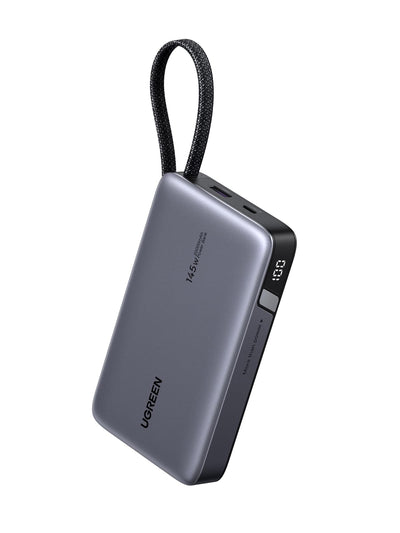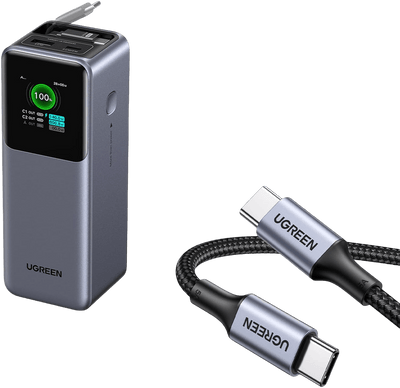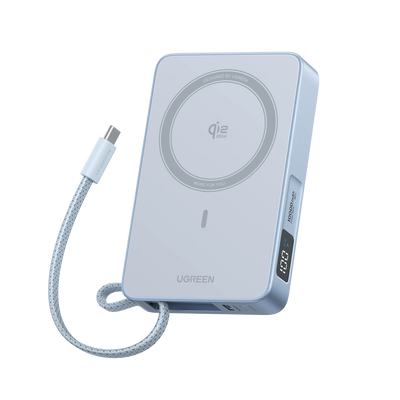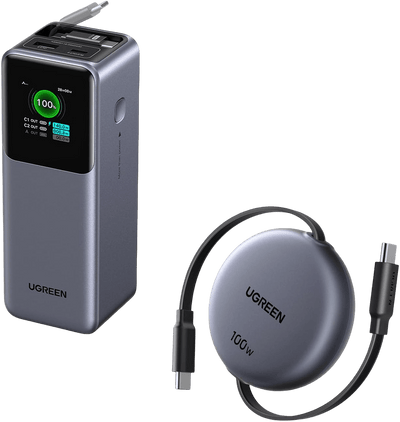Power Banks vs Traditional Chargers: Choosing Your Device Charging Solutions
Power banks and traditional wall chargers serve distinct purposes in your charging ecosystem, each offering unique advantages for different scenarios. Wall chargers excel in stationary environments, delivering consistent power directly from electrical outlets with stable voltage regulation and efficient heat dissipation. They typically provide faster charging speeds and unlimited power duration, making them ideal for overnight charging or extended desktop use.

Power banks shine in their mobility factor, offering charging freedom during travel, outdoor activities, or emergency situations when outlets aren't available. However, they introduce variables that can impact battery health, including capacity limitations measured in milliampere-hours (mAh), potential output fluctuations as the power bank depletes, and heat generation in compact portable designs.
The key difference lies in power delivery consistency. Wall chargers maintain steady output throughout the charging process, while power banks may experience voltage drops as their internal battery drains. This variation can stress your device's charging circuitry if not properly managed. Additionally, power banks add an extra conversion step in the charging process, potentially introducing efficiency losses and heat buildup that traditional chargers avoid through direct AC-to-DC conversion.
Lithium-Ion Battery Fundamentals: Why Charging Practices Matter
Lithium-ion batteries power your devices through a chemical process where lithium ions move between positive and negative electrodes during charging and discharging cycles. This movement creates the electrical energy that keeps your smartphone, tablet, or laptop running. However, each time these ions travel back and forth, they cause microscopic wear to the electrode materials, gradually reducing the battery's ability to hold charge over time.
How Charge Cycles Impact Longevity
A complete charge cycle occurs when you use 100% of your battery's capacity, whether through one full discharge or multiple partial uses that add up to 100%. Partial charge cycles from 40% to 80% create less stress than full cycles from 0% to 100%. Deep discharges below 20% force lithium ions to work harder, accelerating chemical breakdown and reducing overall battery lifespan significantly compared to maintaining moderate charge levels.
Critical Stress Factors for Batteries
Heat generation during charging speeds up chemical reactions that degrade battery materials, with temperatures above 95°F causing permanent capacity loss. Voltage fluctuations from inconsistent power sources stress the battery's internal circuitry, while rapid charging generates additional heat that compounds these damaging effects when proper thermal management isn't maintained.
Optimal Power Bank Practices for Battery Health
Implementing proper power bank practices requires understanding your device's specific charging requirements and maintaining consistent habits that minimize battery stress. The foundation of healthy charging starts with selecting compatible equipment and establishing routines that work within your battery's optimal operating parameters.
Selecting the Right Power Bank Specifications
Match your power bank's output amperage to your device's maximum charging input, typically found in your device specifications or original charger ratings. Most smartphones handle 2.1-2.4 amps safely, while tablets may require 2.4-3 amps for efficient charging. Choose power banks with capacity ratings between 10,000-20,000 mAh for optimal balance between portability and charging cycles, avoiding oversized units that encourage overcharging habits through excessive available power.

Safe Charging Habits
Maintain your device's charge level between 20% and 80% whenever possible, as this range minimizes chemical stress on lithium-ion cells while providing practical daily usage. Disconnect your power bank once charging reaches 80% rather than leaving it connected for continuous trickle charging, which generates unnecessary heat and keeps the battery in a high-stress state. Monitor charging temperatures by feeling your device periodically, immediately stopping the charging process if excessive heat develops and moving to a cooler environment with better air circulation for safer charging conditions.
Integrating Magnetic Wireless Chargers with Power Banks
Magnetic wireless charger technology brings convenience to power bank usage through precise alignment systems that eliminate fumbling with cables in dark environments or tight spaces. These magnetic systems create secure connections between your device and power bank, reducing wear on charging ports while maintaining consistent power delivery throughout the charging process.

Wireless charging operates at roughly 75-80% efficiency compared to wired connections, meaning slightly longer charging times and increased heat generation during power transfer. This efficiency difference becomes more pronounced with power banks, as the wireless conversion process adds thermal stress that requires careful management to protect battery health.
Compatibility and Best Pairings
Modern smartphones with built-in magnetic charging systems work seamlessly with compatible magnetic power banks, automatically optimizing power delivery based on device requirements. For devices without native magnetic support, magnetic cases or adapters enable compatibility while maintaining proper alignment for efficient charging.
Effective heat dissipation requires power banks with ventilation channels or cooling fins, particularly during wireless charging sessions that generate more heat than wired alternatives. Position your device and power bank on hard, flat surfaces away from fabric or enclosed spaces, allowing air circulation around both units to prevent thermal buildup that accelerates battery degradation during wireless charging cycles.
Step-by-Step Guide to Health-Conscious Power Bank Usage
Developing consistent charging routines transforms power bank usage from a potential battery health risk into a protective practice that extends device longevity. This systematic approach addresses common charging mistakes while establishing habits that work seamlessly with your daily routine.
Pre-Charge Preparation
Check your device's current battery percentage before connecting any power source, aiming to begin charging when levels reach 20-30% rather than waiting for critical low battery warnings. Verify your power bank's remaining capacity through its LED indicators or digital display, ensuring sufficient charge for your intended usage without forcing the power bank to operate at dangerously low levels that stress its internal battery. When traveling with multiple devices, consider organizing your charging setup alongside other tech accessories from brands like UGREEN to maintain a clean, efficient charging station that promotes proper heat dissipation.
Charging Execution
Connect your charging cable to the power bank first, then to your device, creating a stable power flow before the device begins drawing current. Monitor both devices during the first few minutes of charging, checking for excessive heat buildup that indicates compatibility issues or environmental factors requiring immediate attention and repositioning to cooler locations.
Post-Charge Protocol
Disconnect your device when it reaches 80% charge level, avoiding the high-stress final charging phase that generates additional heat and chemical wear. Store your power bank with 40-60% charge remaining in cool, dry locations away from direct sunlight, maintaining optimal storage conditions that preserve both your power bank's longevity and readiness for future charging sessions.








commentaires